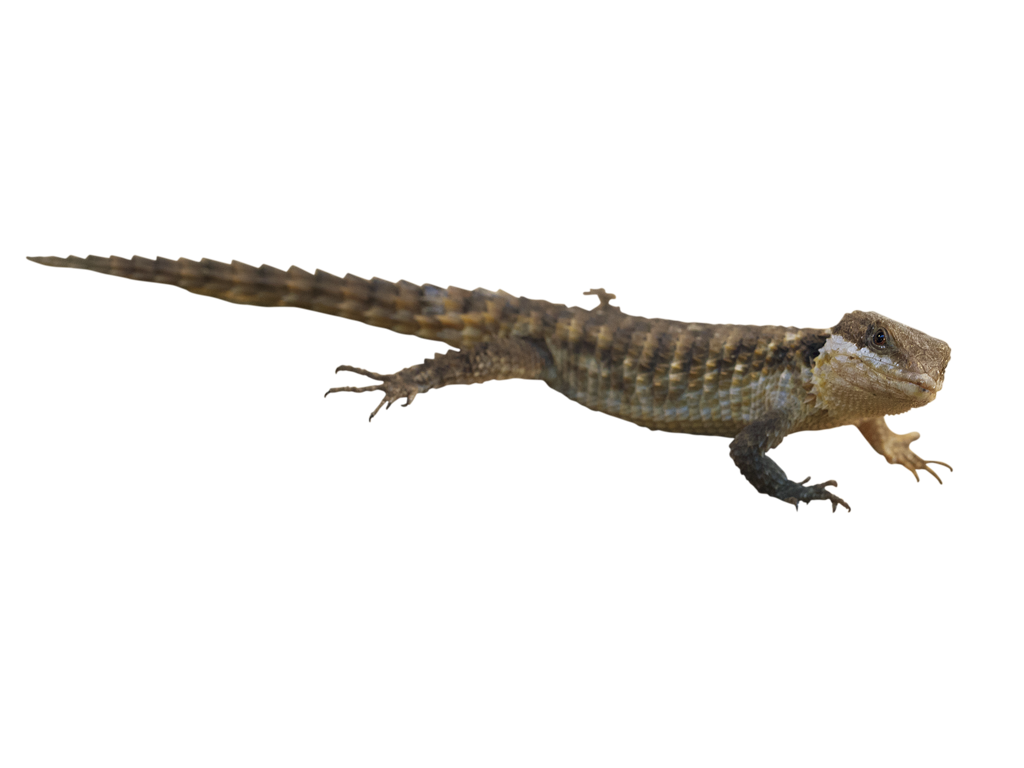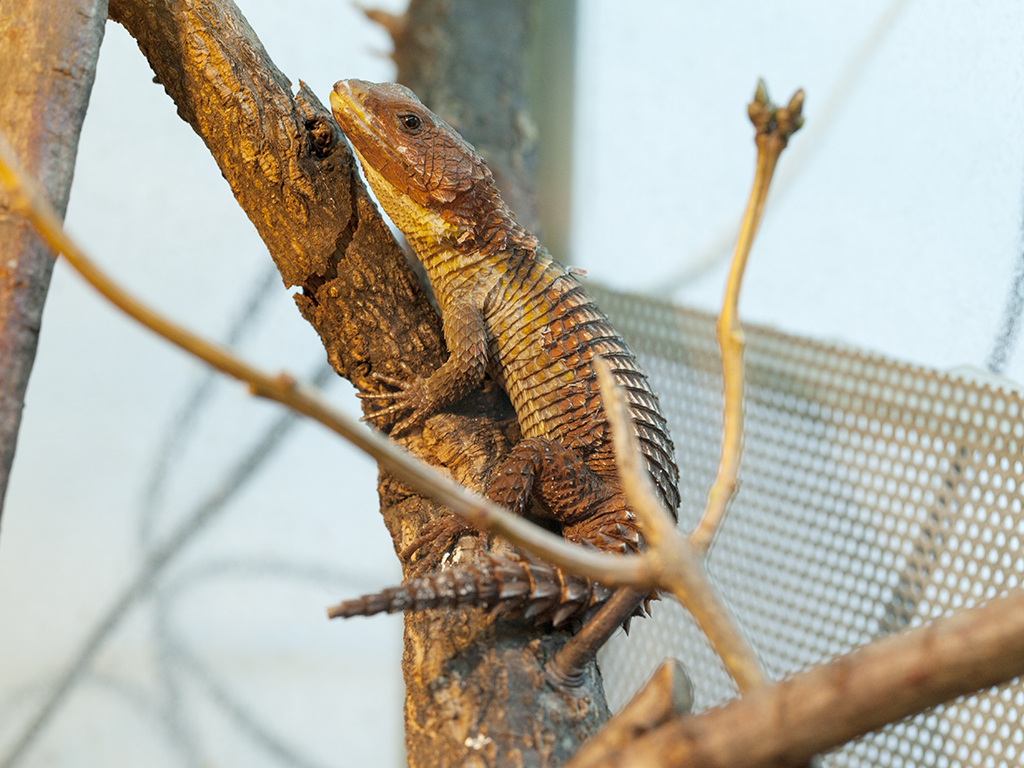East African spiny-tailed lizard
Cordylus tropidosternum

Stores fat in spiny tail
The East African spiny-tailed lizard inhabits dry forests, in trees and on rocks, and is at its most active during mornings. The species stores fat in its spiny tail in preparation for the dry season. It is a cautious lizard that can move very quickly when seeking shelter, and it prefers to live in groups. Males become aggressive and territorial during mating season. After mating, the female gives birth to up to 6 live young.
The body and tail of the East African spiny-tailed lizard are covered with bone plates that serve as armour. The lizard escapes into tight spaces and wedges itself with its bone plates when it feels threatened. This makes it almost impossible for predators to get at it.

Photo: Johanna-Rylander-Malmö-Museer
Caught in the wild and made into pets
Like many other species of lizards, the East African spiny-tailed lizard is a popular animal to keep in terrariums. However, people’s desire to keep lizards as pets is leading to many individuals being caught in the wild and transported long distances. At the moment the species is not endangered, but many other species of lizards have declined in numbers because of humans, and this could happen to the East African spiny-tailed lizard too.

Photo: Johanna-Rylander-Malmö-Museer
Distribution worldwide
East Africa.
White marking = Distribution

Threat based on the Red List

Trade regulations
CITES: B-listed.